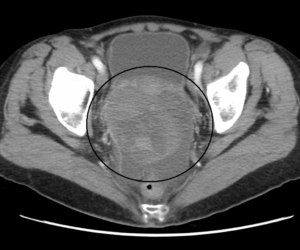Cancer is one of the biggest threats to a long and healthy life, accounting for approximately one in four American deaths. It is a disease that is characterized by uncontrolled cell growth leading to tumors and shutting down of biological processes. These issues arise from mutations in the genome that accumulate over time and can be initially caused by environmental factors (i.e. smoking). Recently, researchers have detected mutations specifically to ovarian cancers.
Overview. Scientists at Yale have determined that uterine and ovarian cancers come from mixed cell types, called carcinosarcomas (CSs). In particular, these cell types include epithelial (tissue that lines blood vessels and organs) and sarcomatous (connective tissue). Apart from the typical mutations of P53 and BCOR, whose regular functions are to prevent tumor growth and aid the immune system respectively, they found excess mutations in genes coding for histone H2A and H2B along with an increase of a histone gene cluster, found specifically on chromosome six.
What are the role of histones? First off, a histone is a bundle of proteins that help package and condense DNA so it fits in the nucleus of a cell (otherwise it would stretch out to be over 6 feet long). Even though we typically see DNA in a double helix form, it’s normally found in the cell as chromatin where H2A and H2B are a subgroup of proteins that lead to this chromatin structure. It is favorable for the cell to bundle its DNA because it regulates which proteins are made by unwinding it at specific locations. when histones get modified, by adding a very negative phosphate group for example, the shape of DNA will change allowing for mitosis: nuclear division leading to tissue growth. With that said, histone modifications have many roles in the cell cycle, apoptosis, and signal transduction as well as cellular differentiation and plasticity. As such, it’s very much environment dependent if the addition of a histone will help or hurt a cell.
Towards better detection and treatment. These scientists have found that mutant, but not wild type histones H2A and H2B have increased expression of epithelial-mesenchymal transition (EMT) in ovarian cancers. This transition marks when an epithelial cell, which is normally stationary and anchored to organ tissue, turns into a mesenchymal cell, which is involved with connective tissue. These later types of cells have increased ability to migrate to/invade other tissues and have an elevated resistance to apoptosis (controlled cell death). These characteristics combined with cancer mutations could lead to metastasis, cancer spreading. When ovarian cancer is already so hard to detect, having it metastasize is a rather terrifying thought.
However, EMT has some defining characteristics such as changes in microRNA expression and increases in proteins that degrade the extracellular matrix. MicroRNA are small strands of RNA that play a role in gene silencing via regulation of gene expression, but having there be a quantifiable difference between proteins and RNA between mutants and wild type in general is crucial in drug development and target studies. Work has been done elsewhere showing that particular families of miRNA (200 and 205) have been shown to repress EMT by competing with other miRNA families that promote EMT. This means that the cells remain as epithelial cells instead of transforming. Even though this does not cure cancer or undo the underlying genetic mutations, it’s a good first step in preventing the spread of cancer.
Take away. As always, drug development is a slow process, especially when dealing with diseases at the genetic level because the switch between positive and negative physiological effects is so sensitive. The biggest deal here is the potential for better detection of ovarian and uterine cancers because they are so difficult to find and diagnose. This particular cancer runs in my family so i personally hope that screening methods can improve quickly, not to mention treatment after diagnosis.


Leave a Reply